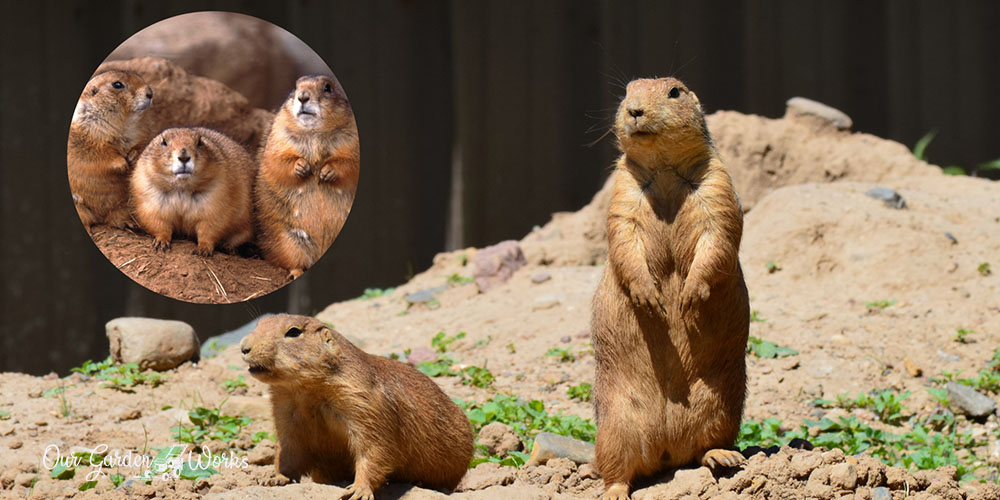Prairie dogs are creatures with deceiving looks. They are adorable but can wreak havoc on a well-manicured lawn and lush garden. Known to be prizes for recreational shooting, learn how to get rid of prairie dogs in ways where you can avoid slaughtering these keypoint species in the ecosystem.
A lot of debates among farmers and animal support and conservation groups remain rampant about the killing of prairie dogs.
While no law prohibits anyone from killing these stocky burrowing animals, we must keep them alive because our ecosystem will not survive without them.
In this post, we highly recommend managing prairie dogs in humane ways even if it’s a real challenge to do so.
Before we lay out all the possible ways you can drive them away from your lawn, it’s best to first learn more about their behavior.
Getting to know these burrowing creatures will help you prepare perfectly engineered control strategies that are based on their behaviors and features.
(You could use the table of contents below to jump to the sections that are most important to you.)
Getting To Know The Smart Prairie Dogs
Prairie dogs are 14 to 17-inch burrowing ground squirrels that are often compared to rodents. They are chunky, weighing around 1.5 to 3 pounds, with a rounded head and gray to tan fur. They are called dogs by French researchers because of their barking noises when mating and when they are in danger.
Prairie dogs are very social animals, unlike chipmunks. They grow in packs and congregate in their tiny territory called prairie dog town. Groups of prairie dog families are called coteries.
Prairie dogs work like an organized town where there are lookouts and smart adults who can recognize traps. They build their homes with a drainage system to prevent flooding in their burrows as well as some holes for lookouts.
The five species of prairie dogs are found in the northern states of the US, Mexico, and Alberta, Canada. These include:
- Black-tailed prairie dog (Cynomys ludovicianus)
- Gunnison prairie dog (Cynomys gunnisoni)
- White-tailed prairie dog (Cynomys leucurus)
- Utah prairie dog (Cynomys parvidens)
- Mexican prairie dog (Cynomys mexicanus)
Did You Know?
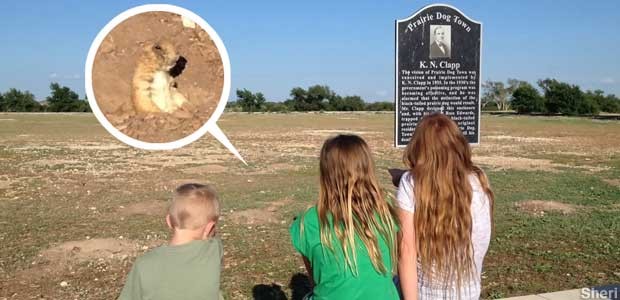
The largest prairie dog town in the US is the Texas Prairie Dog Town in Lubbock, Texas. The whole town stretches around 25,096 square miles that hold around 400 million prairie dogs.
Prairie dog behavior
The innocent look of prairie dogs can make anyone unsuspecting. However, they are probably one of the most organized and smartest animals in the wild. It is probably the reason why out of frustration, most farmers resort to killing them.
Here are some of the smart behaviors of prairie dogs that make them hard to control:
(1) They burrow deep into the soil with tunnels that span from 10 to 100 feet long and depth of 3 to 14 feet. The surrounding soil around the entrance of the mount is a few feet high to prevent the water from getting into the tunnels.
(2) Old prairie dogs recognize traps and manage to get around them without being tempted by the bait.
(3) Like chipmunks and squirrels, they reproduce fast. Each pair can produce 3 to 8 babies from March to April every year.
(4) Prairie dogs have lookouts that will signal all the members of the coteries to hide in their burrows.
(5) They create a big crater at the entrance of their tunnels to collect rainwater and prevent flooding in their burrows.
(6) Prairie dogs are suspicious animals and don’t trust anything new that’s placed next to their burrows.
Prairie dogs prefer to live in open areas like grasslands and lawns to help them detect predators easily.
One key thing that you can use against prairie dogs is their avoidance in areas with tall grasses and woody areas. They want complete visibility of their surroundings to guard their towns.
They are also active during the day and are busy foraging every summer. Like the deer, black-tailed prairie dogs don’t hibernate during winter but occasionally hide in their burrows during harsh winter seasons.
The other types of prairie dogs such as white-tailed and Gunnison prairie dogs hibernate from October to March.
The prairie dog damage
Prairie dogs are capable of causing extensive damage to farmlands, gardens, and lawns. They can destroy from the ground up and even invite other pests into your property.
Here are some of the most devastating damage caused by prairie dogs:
(1) They can graze two pounds of grass in a day and rob cattle and other livestock of the food that they need.
Well-manicured lawns can be completely clipped off due to hungry prairie dogs. The types of grass that are usually devoured by prairie dogs are buffalograss, western wheatgrass, and grama grasses.
(2) Gardens can also be damaged because prairie dogs eat flowers, shoots, seeds, and roots of almost any plant. When desperate they also consume tiny insects.
(3) Prairie dogs are not directly harmful to humans but they can be a carrier of plague-infested fleas that carries the bacterium Yersinia pestis.
The plague can be transmitted to humans through flea bites that often manifest through early symptoms like nausea and fever.
(4) The burrows created by prairie dogs can also shelter rattlesnakes, wolf spiders, and black widow spiders which are other sets of dangerous pests.
If you’re suspicious about the type of infestation you have at home, check for some signs.
You’re surely dealing with prairie dogs if you see holes in the ground and the grass looks grazed or clipped. You’ll also see them looking out during the day.
Why killing prairie dogs is not a good option
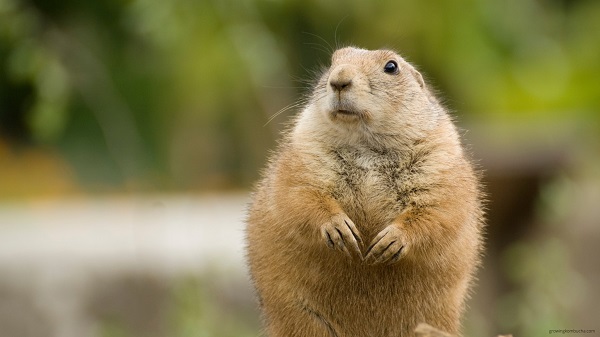
We humans often resort to killing animals or insects that try to destroy our gardens and farmlands because it’s the quickest route to comfort.
While it can be easily justified due to the damage they cause, keypoint species like prairie dogs play a significant role in the ecosystem.
Prairie dogs are considered keystone species, which means it is directly related to other wild animals like eagles, songbirds, hawks, foxes, and 150 other wildlife animals. Public killings of prairie dogs can threaten their population which can make them extinct one day.
The two species of prairie dogs, namely Utah and Mexican prairie dogs, are already considered endangered species.
The black-tailed prairie dog is even listed under the Endangered Species Act protection by the U.S. Fish and Wildlife Service. Unfortunately, despite the protection bestowed upon these burrowers, it’s still legal to hunt them in 11 states in the US.
The use of rodenticides and fumigants to kill prairie dogs also pose danger to the surrounding beneficial animals. It can also pose risk to the health of families and pets who may accidentally consume or inhale chemicals in the treated area.
More than the potential threat to their extinction and as a keystone species, prairie dogs burrowing and eating habits are benefiting a lot of aspects of the ecosystem.
Benefits of prairie dogs to the Ecosystem
Due to the damage they make, a lot of people have overlooked the role of prairie dogs in ecological diversity. They benefit the ecosystem through the following:
- The dirt patches created by prairie dogs during burrowing make the best camouflage location for the ground songbird mountain plover to lay its eggs and build a nest.
- In the wild, the burrowing activities of prairie dogs give way to the growth of shrubs in the middle of the field, creating a diverse habitat for both timber and grasslands.
- Grazing animals and prairie dogs coexist quite closely and are competitors over the grass at the same time. Researchers observed that cows choose to graze next to prairie dog towns more than any other parts of grasslands. While prairie dogs love to inhabit areas that are grazed often by livestock to keep tabs on lurking predators.
- Prairie dog burrows are also home to other burrowing animals like owls, spiders, cottontail rabbits, rattlesnakes, and other animals.
- As prey animals. Prairie dogs are also a food source for predators like the endangered black-footed ferret, badgers, coyotes, foxes, eagles, prairie falcons, ferruginous, and hawks.
- The burrowing efforts of prairie dogs help improve soil conditions through the reduction of compaction and increased aeration.
How to get rid of prairie dogs in your yard using humane methods
Though prairie dogs are essential parts of the ecosystem, it is still a huge source of concern on how we can coexist with them.
You already did the first step by studying their behavior and the second step is to identify the kind of prairie dog that damages your lawn.
Once you identified their type, here are some of the most humane ways how to get rid of prairie dogs:
1. Block their visibility
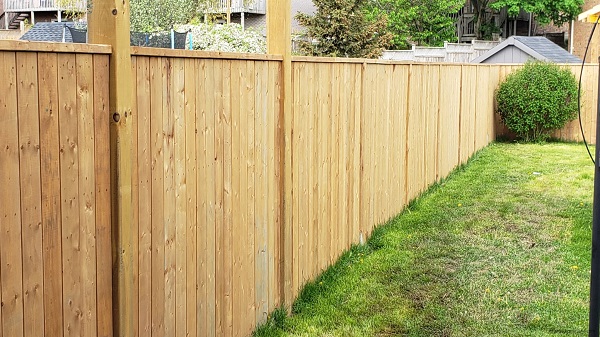
Prairie dogs have one rule: to see is to believe. They are very keen on seeing grasslands before they even attempt to start invading that space and graze it.
You can use that behavior to your advantage by blocking their field of vision using fences and other fencing materials, such as:
- Hay bales
- Tall sturdy plants
- Hedges
- Vinyl barrier fencing
- Snow fencing
- Shrubs
- Wood-slatted privacy fencing
- Fast-growing tall grasses.
- Trees
- Electric fencing
While fences can block their line of sight, remember that prairie dogs are avid burrowers. They dig deep, which will require you to install the fences at least 15 feet into the ground. Otherwise, they may dig their way across your fences.
2. Hay bales and tall grass technique
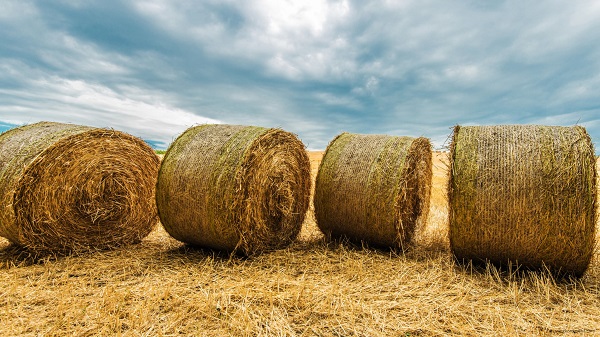
Hay bales are effective but only for a limited time because they degrade and decompose too.
The best strategy is to plant tall shrubs or hedges behind the bales. As the bales slowly degrade, the shrubs will also grow until it replaces the bales in covering your lawn.
3. Tolerate the presence of some predators
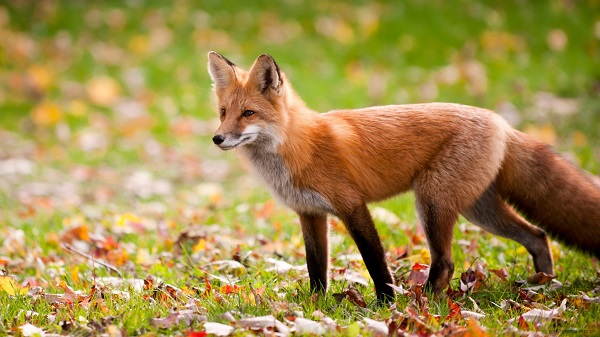
Having prairie dog problems will make you realize the essence of having predators around.
If some coyotes or foxes are sneaking around your property, let them naturally scare the prairie dogs away from your house.
4. Trapping
Setting up traps is probably the most challenging method to get rid of prairie dogs because they can outsmart you on it. However, if set up in good locations, they can work just right.
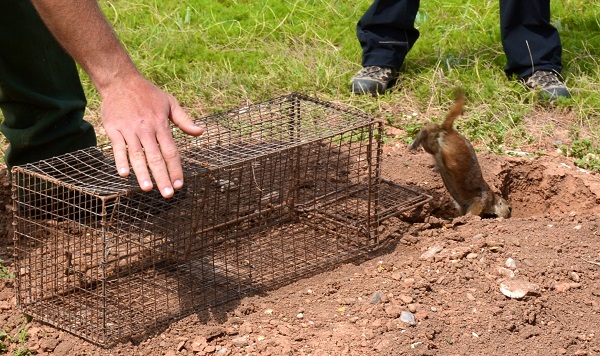
You can capture them using a double-door live trap with horse sweet feed mix. They are more effective if you place them in the shed when they will have no place to escape from.
Bring a lot of patience in using traps since it will surely take some time to lure some prairie dogs. The old ones are quite smart and will recognize the trap at a glance.
5. Drive them away through scents
Though large colonies of prairie dogs will not be repelled by scents, they can be effective on a handful.
Place these scents around the entrance of the burrows to drive them away from your property:

- Fox urine using a pee dispenser.
- Cayenne pepper.
- White vinegar.
- Peppermint.
- Coffee grounds.
- Cinnamon bark oil.
- Crushed garlic in water.
- Dryer sheets hang in a bag.
- Irish Spring bar mini bags.
6. Avoid overgrazing
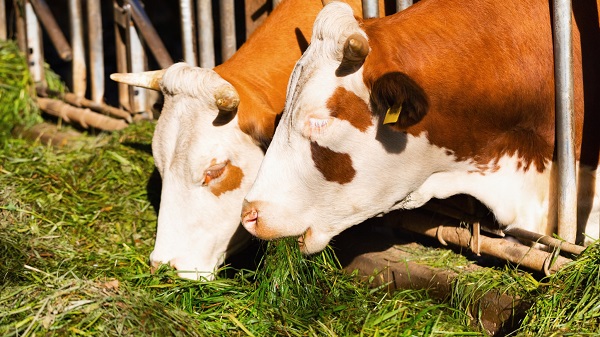
Learning how to get rid of prairie dogs not only involves using control methods but also some prevention. They are anxious to be around tall grasses and shrubs that can block their visibility in the area.
If you own any cattle or livestock, don’t let them create viable habitats for prairie dogs to keep them at bay.
Let the grass grow longer than it should until the threat of having prairie dogs subsides. If they are frequent visitors in the area, installing a deep fence or hay bales around the perimeter is an ideal long-term strategy to secure your yard.
7. Set up a motion-activated sprinkler
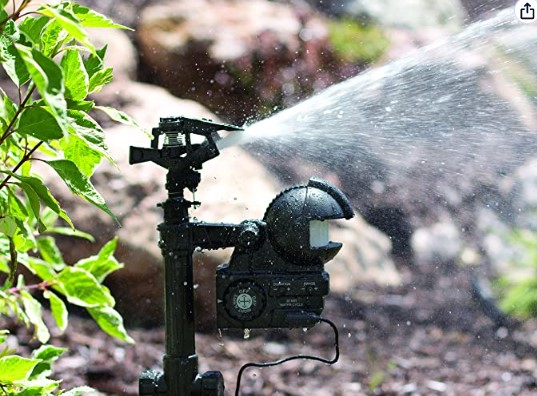
Another option is to ward off any visiting prairie dogs by scaring them with targeted shoots of water. Though they are avid diggers, shooting water to lookout prairie dogs can give them a signal to not even try to step on your property.
Motion-activated sprinklers like Orbit have sensors that detect the slightest motion triggering the sprinklers. It is also an efficient human decoy that can scare deer and chipmunks.
8. Place large aggregates and tall ground covers around the holes
Prairie dogs are not a fan of tough ground covers. They will have a hard time digging tunnels through it and it can also make it tough for them to have good visibility of predators around the area.
Big boulders along with trees can also discourage prairie dogs from scouting your area.

Placing big rocks and aggregates in your yard may alter your landscape altogether. However, it will also give you that peace of mind that your grass, plants, and flowers are safe from hungry burrowing animals.
9. Flooding threat
What makes prairie dogs hard to manage is their ability to hide underground. You may see one lookout but you will never know how much is inside the tunnels until they move or you dig them out.
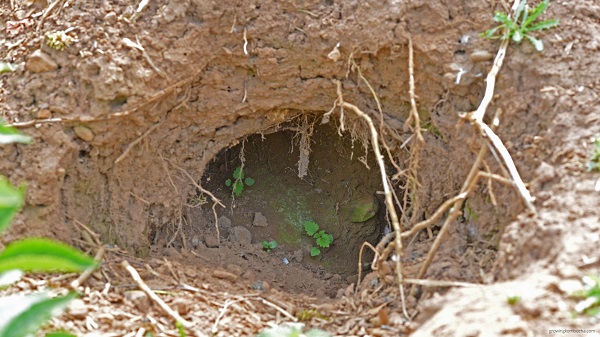
One thing that can get them out of their burrows is the threat of flood. Flooding the burrows itself is inhumane but scaring them off with water can do the trick.
Try to pour some water into the burrows and see how they will react. You can set up a camera to check on them if they’ll evacuate to another location. Once they move, make sure to cover the holes immediately to prevent other pests from taking over.
10. Repellent
Lastly, it doesn’t hurt to use some repellents for burrowing animals. Prairie dog repellants are made to irritate the sensitive sense of smell of prairie dogs not kill them on the spot.
Here are the best options that you can try:
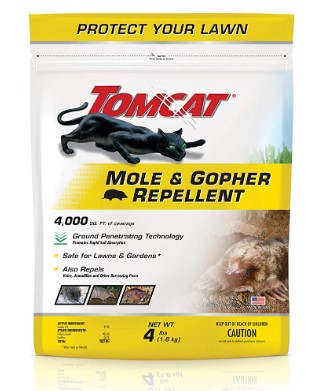
- Nature’s Defense All-Purpose Animal Repellent.
- Bonide Repels-All Animal Repellent Granules.
- 2022 Solar Animal Repeller Ultrasonic Repellent.
- Tomcat Mole & Gopher Repellent Granules.
Using repellents is a more humane way to control small prairie infestations. However, make sure to spot-check it on a tiny area in your lawn to see if it will damage your grass.
Also, if you are dealing with a heavy prairie dog infestation, it’s best to hire a professional exterminator to set efficient traps for prairie dogs.
Final Thoughts
We hope that this post helped you discover how to get rid of prairie dogs. It can be challenging but the effort to preserve our ecosystem by keeping the prairie dogs alive is a cause that will benefit future generations.
We support the movement to preserve the remaining five species of prairie dogs which also indirectly preserves other wild animals like foxes, owls, and ferrets.
What’s your take on killing prairie dogs? Let us know in the comments!
Also, please don’t forget to share this post with your friends who are losing their minds over the damage caused by prairie dogs.
